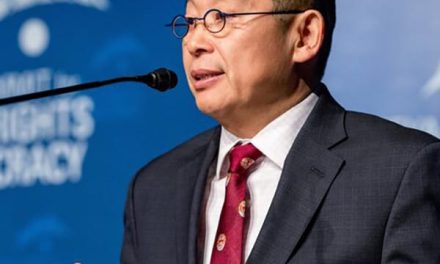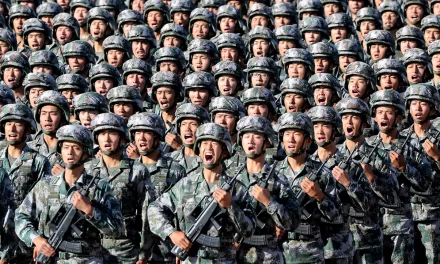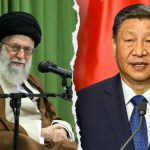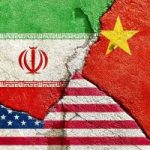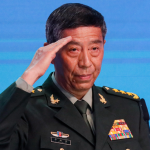BY BRADLEY A. THAYER AND LIANCHAO HAN
In 1947, President Harry Truman invited Republican senators, led by Arthur Vandenberg, to support his proposal to help Greece and Turkey resist pressure from the Soviet Union. Vandenberg and other Republicans strongly supported Truman, arguing that “politics stops at the water’s edge.” With their backing, Truman created the bipartisan foundation for U.S. foreign policy during the Cold War, including the “Truman Doctrine,” pledging U.S. support for all states fighting communism.
Today there is a similar opportunity for the Biden administration to continue the Trump administration’s identification of the China threat and to forge a bipartisan consensus on the dangers of Beijing’s expanding power to the U.S. homeland, global interests, and allies.
As at the dawn of the last great power competition with the Soviets, whether the American elite and people understand the scale and scope of the China threat requires sustained leadership from both parties. If they provide this leadership, the nature of China’s threat in all respects — including undermining U.S. interests, threatening U.S. allies, committing human rights abuses, putting Uighurs, Kazakhs and Kyrgyz Muslims in concentration camps, suppressing Tibetans, expanding territory against India or in the South China Sea, producing fentanyl for global export, and undermining the pillars of the U.S. economy — will be grasped by the American people.
This requires a break from the past. Over the past generation, the U.S. has allowed China to penetrate the fabric of its economy, technology and social life. China has infiltrated academic, financial, political, scientific, social and technological communities. No previous adversary of the U.S. did so. Despite their best efforts, the Soviets never succeeded in such a momentous accomplishment. Soviet leaders would have been equally incredulous that the U.S. dropped its guard to permit this, and envious of China’s considerable ability to deflate any recognition within the U.S. that it is indeed a threat. During this period, there was bipartisan consensus — however, perverse for America’s interests. What united Democrats and Republicans was the intent to facilitate and support China’s growth through economic cooperation, investment, and knowledge and technology transfer.
President Trump broke that consensus. Now the Biden administration has the opportunity to continue on Trump’s inflection point and, indeed, steepen the curve. This would ensure a bipartisan acknowledgment of the national security problem of Chinese penetration of the U.S.
To do this, the Biden administration must follow the Hippocratic Oath: “First, do no harm.” The U.S. finds itself in a singular situation: It has been aiding the rise of its peer competitor. No one would mistake the U.S.’s China policy over the past 30 years as the equal of Klemens von Metternich, Otto von Bismarck, or Deng Xiaoping in strategic genius. If the U.S. continues to aid the rise of its opponent, then its ability to sustain its global interests and the international order it created and sustained is subject to doubt.
The China threat is the dispositive issue of U.S. foreign policy and will remain so for the rest of the century. It demands a bipartisan approach and consensus. This requires the Biden administration to compel the acknowledgement by all echelons of the American elite that China is a threat to our global interests, allies, U.S. economy, liberal political principles, social values, and human rights. To this end, it can build upon the efforts of the Trump administration, which labored to produce a whole-of-government response.
Once the threat is acknowledged in critical communities such as Wall Street, the administration must end China’s penetration in all of its forms. The guiding principle of the Obama administration might be politely recalled as “Don’t do stupid stuff.” On China, the U.S. has been “doing stupid stuff” for a long time. Aiding the growth of China’s power needs to end now. The Chinese are still siphoning off U.S. intellectual property and knowledge in academe, the private sector, Silicon Valley, Wall Street and the defense industry. To end this, President-elect Biden will have to overcome significant bulwarks since China has constructed a phalanx of defenders in almost every aspect of the United States. China’s defenses were weakened by the Trump administration and now must be breached by Biden’s team. Trump overcame most Republican resistance to meeting the China threat, and Biden can do the same with Democrats.
As these measures are realized, the Biden administration will have to develop its own strategy to reverse China’s expansion and ambition, as well as the relative erosion of U.S. power. It will need multiple and sustained strategies. Biden has the opportunity to build upon the successful actions of the Trump presidency. From this foundation, Biden must take the next steps — with bipartisan support — to mobilize the American people to confront China. Opposition to China’s aggression must be bipartisan and cut across all social divisions to unify all Americans. The Biden administration has the opportunity to create such a consensus.
This article first appeared in The Hill on 12/21/20 1:00 PM ET


